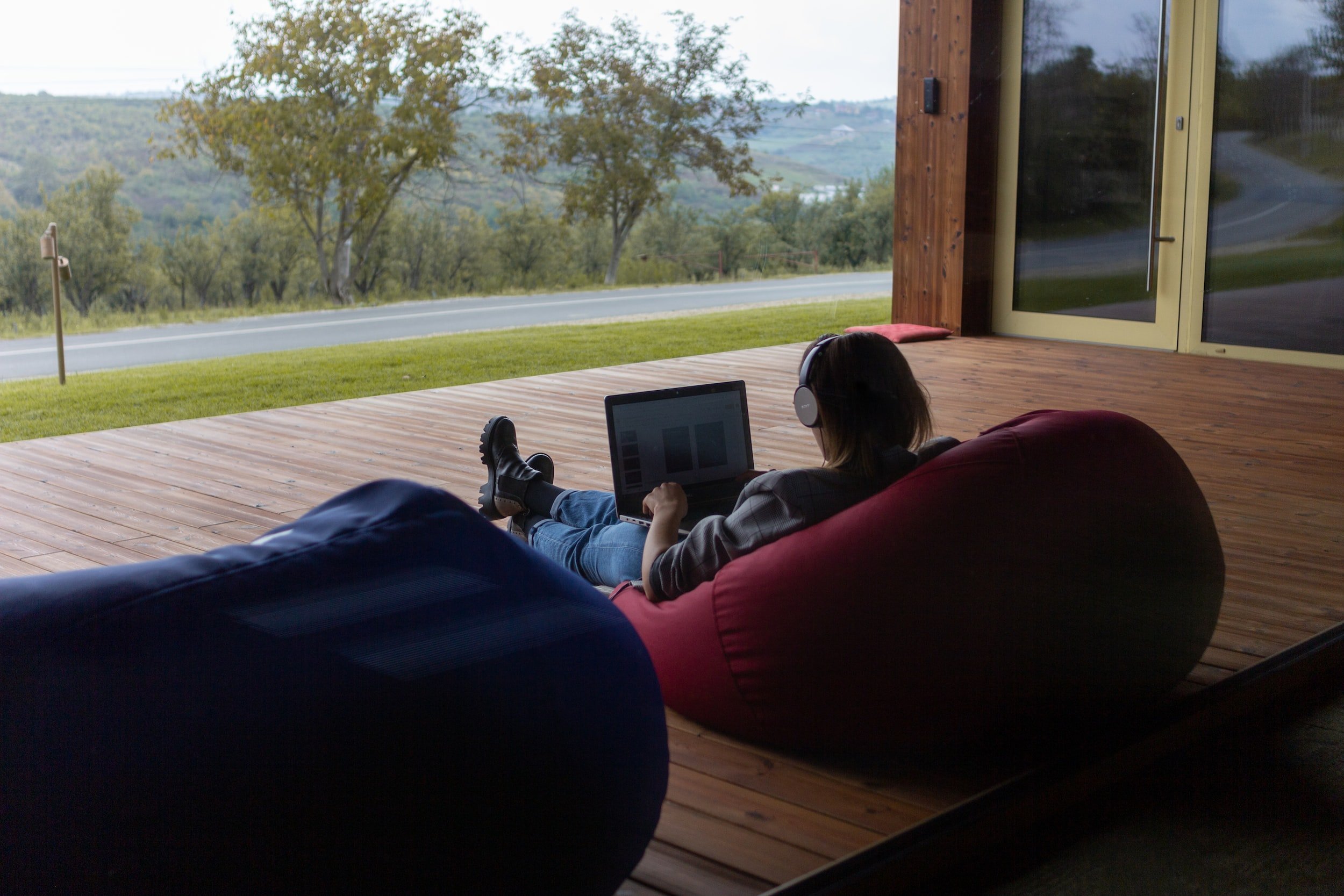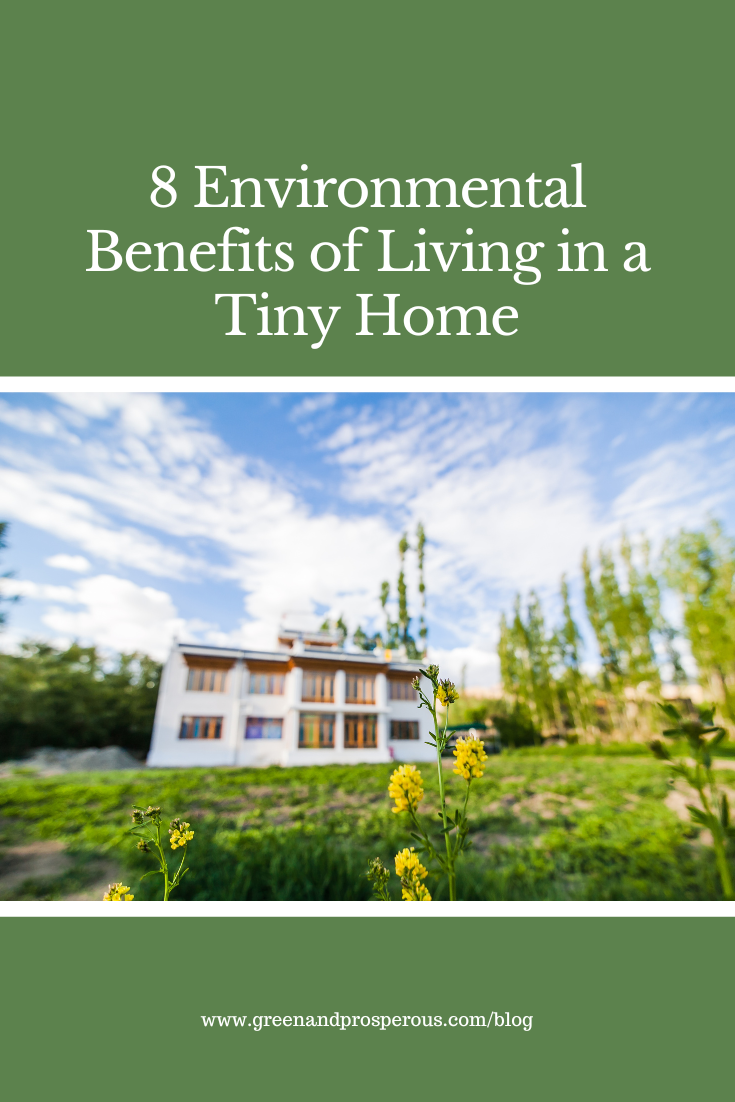8 Environmental Benefits of Living in a Tiny Home
/There are many ecological advantages to living in a smaller dwelling. Reducing your footprint in the world is just one of the surprising benefits of downsizing to a tiny home. A tiny home is a small house that can provide all the basic needs of a family or individual without consuming as many resources as a larger house would. require. There are no specific standardized or legal definitions of what constitutes a "tiny house," but the term has generally been used to describe homes on wheels, made with recycled materials that require less energy than typical housing.
Tiny houses can be intended for use by individuals who want to live a more environmentally friendly lifestyle. Individuals who purchase or rent tiny homes are also typically more conscious of their consumption habits than others. For example, foods that are particularly taxing on the environment are less likely to be purchased by those residing in tiny households. Tiny home dwellers also tend to eat more sustainably and many opt to grow and eat their own food. Consider these environmental benefits of compact homes if you're considering how to build a tiny house or relocate to one.
Fewer Substances
Fewer materials are needed to build a house that is less than 400 square feet in size as opposed to a residence that is over 2,600 square feet. There will be less need to move supplies, which means fewer trucks on the road and fewer harmful emissions. When you live in a tiny home, you can also save money with the reduced amount of building supplies you’ll need for maintenance and upgrades. Since doing so will save money and help the environment, it's a win-win situation.
Alternative, More Eco-Friendly Materials
Most micro dwellings are built using either newly available or repurposed environmentally friendly materials. As a result of their rarity, repurposed materials are rarely used in construction. Due to their compact design, they are ideally suited for usage in urban apartments and condos. Recycled cork flooring and solar roof tiles are two examples of the newest sustainable materials available, but they come at a high price. However, because of the small size of a tiny house, you won't need as many of these supplies, which means you can save money on their purchase.
Less Energy Is Wasted
Keeping a typical family home warm in the winter and cool in the summer requires a significant daily investment in energy. On the other hand, tiny houses have a far smaller carbon footprint since they utilize fewer appliances and are, therefore, more efficient in their energy use. Most tiny-house dwellers are nomadic types who prefer to spend their time outside. As a result, they will use a lot less energy, which is excellent news for both the environment and your budget.
Simpler Living Means Less Stuff and Less Garbage
Thanks to creative design, today's tiny houses may pack a lot of storage space into a small footprint, but they still can't match standard-sized residences. Therefore, most people who live in tiny houses are attentive shoppers who prefer to invest in high-quality fixtures and furnishings and who think more carefully about the things they need and the things they can do without. Additionally, there is a reduction in the amount of packing waste caused by impulse purchases. Living in a compact house guarantees you'll be more efficient with your space and consume fewer resources.
Being a Part of the Workforce While out in the Open
The great outdoors must be treated as a "second living place" while downsizing to a tiny house. To put it in the context, it's the same way that someone who has to make do with a two- or three-room Housing and Development Board (HDB) flat will spend a lot of time in restaurants, shops, and shared offices. Since there is less heat and more light in a smaller space, compact houses are more efficient overall.
Cost reduction
Tiny homes are not just an eco-friendly alternative to the typical large home. The ability to save money through tiny homes is a significant selling point. Its diminutive size means less money spent on utilities, rent, and upkeep compared to a standard dwelling of the same type. In addition, the initial purchase price or monthly rent will be less expensive than that of a standard dwelling.
Securing Our Country's Natural Resources
Tiny homes help conserve natural resources, a positive side effect of turning green. Companies still use substantial amounts of natural fuels in production. However, significant concerns are associated with using non-renewable resources because they will eventually be depleted. Since these resources are crucial to advancing technology, we must do everything we can to preserve them so that we can continue to benefit from them for as long as possible. Investing in a tiny home can play a small but important role in helping in the conservation effort.
Mitigating the Rapid Acceleration of Climate Change
The pace of climate change can be slowed in part by studying how to build a tiny house. Reducing human emissions of greenhouse gases is one way to mitigate the effects of global warming, as numerous studies have demonstrated that these gases play a major role in the warming of the planet. We can accomplish this by cutting back on our consumption and forgoing the usage of our autos. Again, tiny homes can be part of a larger strategy to mitigate climate change.
Like this? Please pin!
Take a step back
Taking a step back to a smaller home has many positive effects on the environment. It is well-known that owning a tiny home can significantly reduce your consumption of energy and goods. Those who live in smaller homes are less likely to buy environmentally harmful foods. Because they use less equipment, tiny dwellings are more energy efficient and have a far lower carbon footprint. People who live in tiny homes tend to be discerning consumers who value long-term investments. You may rest assured that you will make better use of the space in your home if it is smaller.
About the Author:
Joyce Augustine graduated from Utah Valley University with a degree in communication and writing. In her spare time, she loves to dance, read, and bake. She also enjoys traveling and scouting out new brunch locations.









































We are all acutely aware of the impact of human activity on the well-being of the planet. With an increasing realization of the need for drastic changes, the importance of green certifications takes on a growing relevance. In the bigger picture, this represents a tangible commitment to sustainability and efficiency. However, another positive is the fact that green certifications can also elevate the value of a property.